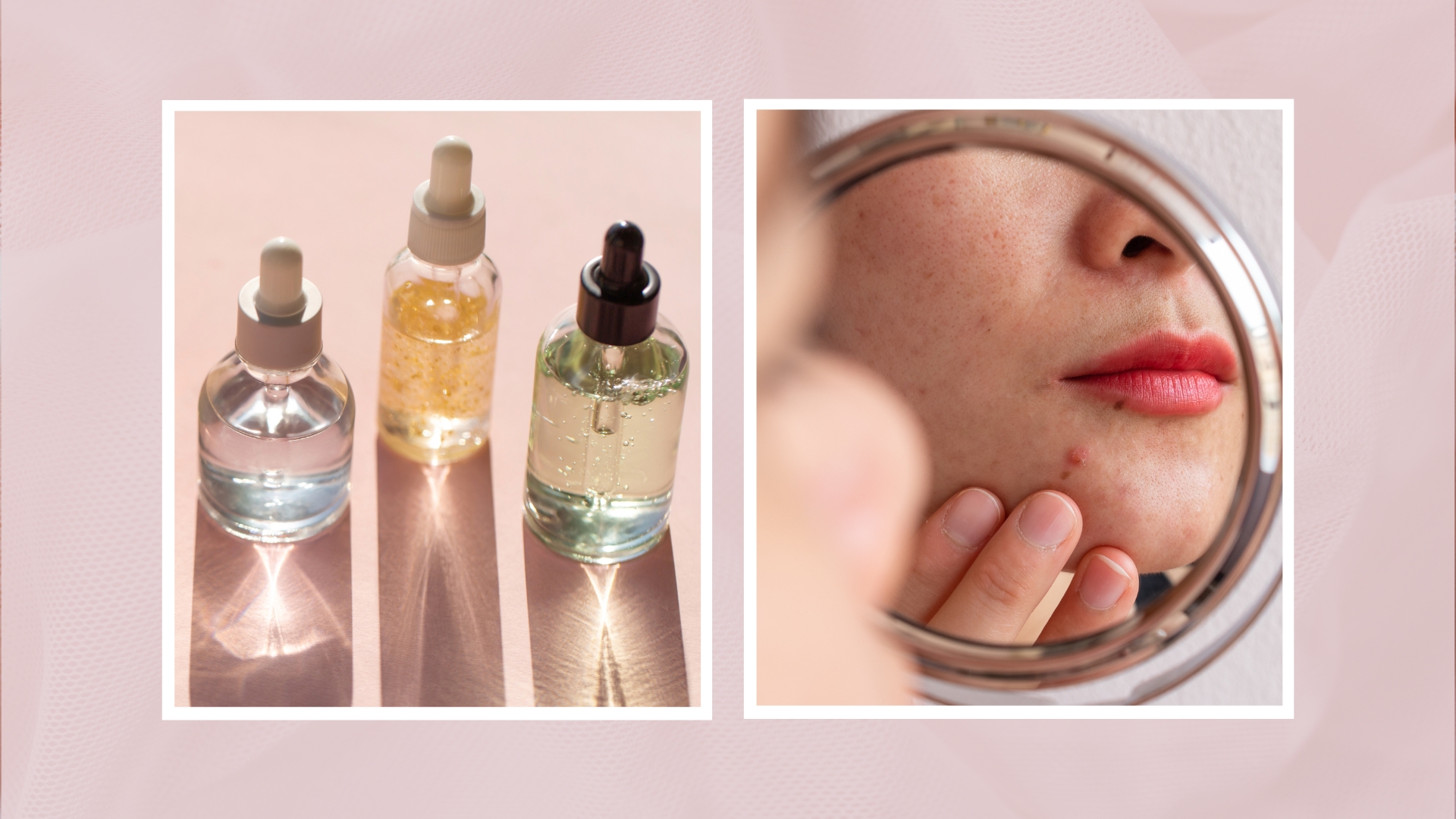
'Skin purging' is a common side effect of using concentrated ingredients in your routine and while it can feel frustrating and counterproductive, the experts say it's very different from a normal breakout - and is often a sign that the formula is working...
Picture this: you've just started using a salicylic acid serum - touted for its ability to exfoliate and unclog the pores - and yet, you're noticing more blemishes emerging. This can understandably be quite worrying (and not to mention annoying) and tempt you to retire that traitorous serum, to avoid any further breakouts. This however, is what's known in the beauty community as 'skin purging' and whilst unpleasant sounding, it's not your typical breakout - nor is it necessarily cause for alarm.
In fact, according to the experts, skin purging can be a tell-tale sign that your best retinol creams or AHAs are working. That said, we've asked the skincare specialists to explain the reaction - and how we can avoid, or lessen the effects...
What is skin purging?
Dr Maryam Zamani, founder of MZ SKIN and leading Oculoplastic Surgeon says to: "Think of skin purging like the skin's version of spring cleaning where things are being eliminated. When you introduce new skincare products or treatments, dead skin can come to the surface from an increase in cell turnover and skin can become red, inflamed, dry or flaky. The appearance can vary from person to person but can include rough skin, papules, pustules, blackheads, or whiteheads, almost similar to acne."
As for the cause, Dr Zamani explains that skin purging is often induced by, "ingredients used in acne and anti-ageing skincare products like retinoids, alpha hydroxy acids (AHAs), and beta hydroxy acids (BHAs), and vitamin C for instance that initiate skin responses."
How long does skin purging last?
Dr Zamani says that skin purging is usually temporary, "typically lasting anywhere from a few days to 4-6 weeks," but says the key, to minimising the effect is to add one active-enriched product at a time, starting to slowly, allowing your skin to acclimatise.
"Remember consistency over intensity is the key and will help you stick to a regimen to for healthy skin."
Is skin purging bad?
So while it's a common reaction to using actives like niacinamide and the best vitamin C serums, is it a bad thing?
The answer is no, not necessarily because as mentioned, it's often temporary and proof that the product is doing what it's meant to do - clearing the pores of impurities. That said, Dr Zamani notes, "If the skin is purging, remember to be kind to your skin barrier and help reduce its inflammation. That means, only using one active every few days until the skin acclimatizes and its use can be increased. Use calming and simple regimens to help the skin re-calibrate and be patient. It is always consistency over quantity."
Though purging is common, Dr Zamani also explains that it is a "type of skin inflammation or irritation." Thus, if your skin is feeling super irritated and inflamed or you're experiencing breakouts in areas where you normally wouldn't, Zamani says: "That might be a sign that the product may be exacerbating a skin condition or that you are using too much or too many actives at once. In that case, it's best to ease off and maybe consult with a dermatologist or skincare professional."
Can we avoid skin purging?
Alas, if you're keen to use AHAs and BHA-infused formulas, purging is not entirely avoidable - especially, if you're using them for the very first time - but there are ways to minimise the effects...
- Introduce actives slowly: "I would start slowly by gradually introducing an active into your skincare routine to allow your skin to adjust, particularly if you are introducing a retinol into your regime for the first time," says Dr Zamani.
- Hydrate your skin: "Always keep your skin hydrated and moisturised as well-hydrated skin is less prone to irritation and inflammation, which can exacerbate purging."
- Always follow with SPF: "Active ingredients can make your skin more sensitive to the sun, and unprotected exposure can worsen pigmentation and scarring caused by breakouts."
- Add calming ingredients: Dr Zamani recommends, "nourishing and calming skin barrier-supporting ingredients like peptides (anti-inflammatory), ceramides (build skin barrier and hydrate), Jojoba oil (protect skin) and other skin humectants."
- Pay attention to your skin and seek professional advice: "What works for one person may not work for another. If you're unsure about how your skin is reacting, or if the purging seems excessive or prolonged, it's always a good idea to consult with a skincare professional."
Our skin purging tool kit
If you're experiencing skin purging or are looking to add a popular active to your skincare lineup, it's important to keep your skin hydrated and nourished - to help ward off the worst skin purging effects.
RRP: £150
Dr Zamani recommends a cream, like that of MZ SKIN's Calming moisturiser, which is enriched with a skin-barrier-loving prebiotic and a blend of ultra-hydrating plant extras, to lock in much-need moisture and a cooling feel.
RRP: £18.90
Regarded as one of the best La Roche Posay products, the Cicaplast B5 Balm is a true saviour for dry-skin sufferers. The formula features thermal spring water and 5% panthenol to intensely hydrate and repair the skin - and is suitable for those with sensitive skin.







